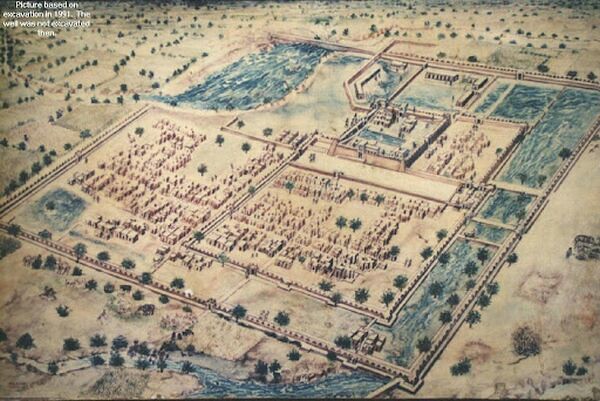Tsunami might have destroyed Gujarat’s Dholavira port town: Study
August 30, 2016
Panaji: Port town of Dholavira in Gujarat, the fifth largest Harappan site, might have been destroyed by a massive tsunami, a study by CSIR-National Institute of Oceanography (NIO) has revealed.
Dholavira is a site of an ancient metropolitan town of the Harappan period and was their largest port-town.
“The results clearly indicate that massive tsunamis are not uncommon in the region. The thick wall in Dholavira shows that Harappans were not only aware of the potential threats from tsunamis, but they were also pioneers in coastal disaster management.
“Most importantly, results of this study opens that possibly Dholavira, at least in part, could have been destroyed by such a tsunami,” NIO Director Dr SWA Naqvi said yesterday.
He was sharing findings of the detailed study conducted by scientists of the Goa-based institute.
The team of scientists, led by Rajiv Nigam, had embarked on the study on the port town at a time when the real purpose of the Dholavira wall has been a topic of considerable debate.
The study has proposed that the thick wall was built to protect the town from extreme oceanic events such as storm surges and tsunamis, Naqvi said.
“This well-planned urban settlement flourished for about 1500 years from about 5000 to 3450 years before present archaeological excavations show that the township comprised three parts — castle, the middle town and the lower town,” he said.
A unique feature of Dholavira is the presence of a 14-18 meters thick wall, apparently built as a protective measure.
“Intriguingly, walls of such thickness are not found even in historic times when the conflicts have been more common and the weapons had become increasingly more destructive,” he said.
Naqvi said CSIR-NIO has carried out additional work at this site with a team of palaeoclimatologists, archaeologists and geophysicists from the institute surveyed a hitherto unexcavated area using Ground Penetrating Radar and systematically collected soil samples.
The director said tsunamis are known to have hit the region during the historical period.
For example, the Makran Earthquake of November 28, 1945 generated a huge tsunami, over 10 meters in height that devastated large areas along the northern shores of the Arabian sea.
Naqvi said the exact timing of the sediments deposited in Dholavira is yet to be established.
PTI
Related Stories
Bhuj railway station in Gujarat to get two-star hotel
"Prosperity of Indus valley civilization was largely contributed by marine trade in Saurashtra"
Gujarat govt to celebrate 600th anniversary of Narsinh Mehta, build museum at Dholavira
Efforts initiated for World Heritage Site status to Dholavira
An NRG’s story on rediscovering New Gujarat:Kutch travel (part Two)
An NRG’s story on rediscovering New Gujarat:Kutch travel(part one)
Report on Dholavira Casino Bar false, no such plan:Minister
Four-day international archaeological workshop in Bhuj
ASI to start excavation at Khirasara in Gujarat today
Dholavira in Kutch-A metropolis of the past(Gujarati Video)
Recent Stories
- Surat Cyber Crime Cell busts international racket with links to 866 crimes, 200+ FIRs
- New Rules for RMC General Board Meetings in Rajkot get approval from Gujarat Govt
- Dr. Prashant Vazirani nabbed in connection with patient deaths at Khyati Hospital
- 58 lakh people impacted with our CSR initiatives in Gujarat: HDFC Bank
- Reliance, Disney announce completion of transaction to form joint venture; Nita Ambani to be chairperson
- DGP Vikas Sahay calls father of MICA student killed by cop in Bopal road rage incident
- Severed calf head found in Umargam; locals demand action
